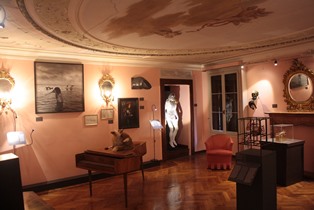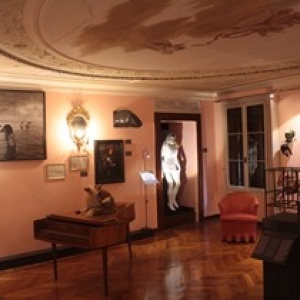
WTI Magazine #13 2014 Jan, 170
Author : Enrico De Iulis Translation by:
In the last months of 2013 in Italy there has been a coincidence that maybe is not so random: two very different exhibits with a unique theme, the Wunderkammer.
The Wunderkammer, or "chamber of the wonders", is a room that since 1400 nobles and people with a high culture set up in their houses with objects of great importance and rarities of any kind, to build their own collection for personal pleasure but also to demonstrate their economic and intellectual status to their guests.
The objects that they would collect were products of natural origin (naturalia), but particularly rare as jasper (mineralia), taxidermy stuffed exotic animals never seen in Europe (animalia), desiccated or drawn plants from other continents (floralia). These objects could also be quite natural but not quite yet explained by the science of that time, and therefore deemed to belong to fantastic animals, or having magical properties or miraculous (mirabilia). And finally objects man-made but amazing for smallness, for innovation, for precisely careful decoration or for the value of their artist or the craftsman, so much to be included in this secret collection (artificialia).
Isabella d'Este in the early 1500s was the owner of a grand chamber of wonders, but for sure most of the characters that could have access to rare items and collect them were the naturalists.
The exhibit in Milan about the Wunderkammer starts right from the objects arrived to present day, which were part of the collections of the naturalists Ulisse Aldrovandi and Giorgio Settala. They are very skillfully exhibited on the ground floor of the Poldi Pezzoli Museum, which normally houses some of these objects. There are narwhal teeth that were believed to be horn of unicorns, nautilus stained in ink, inca masks, cabinets completely made from amber blocks and many other items that have in common a strong remarkable beauty and historical value. The second part of the exhibit in Milan, instead, assembles new works of art that draw inspiration from the old concept of Wunderkammer, offering an atmosphere of little impact and almost always very small in comparison to the modern landscape, and especially compared to the beauty and power of the ancient objects of the first part.
The second exhibit, but previous in a chronological sense, starts as an external event of the Venice Biennal of 2013, a proposal in the setting in the Widman building: a rarity inside a rarity, because this building is always closed. The exhibit has been such successful that the Academy of Belgium has decided to host it in Rome until the end of February. The concept of modern Wunderkammer proposed in this exhibit is without a doubt very effective. The selected works were not made specifically for the show, but have been selected for their uniqueness and their visual and emotional impact. To complete an already winning idea, next to every job there is a very imaginative description of all works as relics, remains or evidence of fantastic adventures like dwarven wars, wrong proofs of the creation by God, faces of the winds, the image of the feeling of jealousy, and so on.
One of the more unusual, beautiful and elegant exibits in recent years, that combines the modernity of these contemporary artificialia with the fantastic and story-telling sense of the Wunderkammer of the Renaissance and of the Baroque.




